HTC One max Review - It's Huge
by Brian Klug on October 28, 2013 10:00 AM EST- Posted in
- Smartphones
- HTC
- Mobile
- One
- Snapdragon 600
- Android 4.3
- One max
The performance section is probably a good place to talk about one of the elephants in the room, and that’s the SoC inside the One max. The One max includes a Snapdragon 600 APQ8064T SoC, which consists of 4 Krait 300 cores running at up to 1.7 GHz, and Adreno 320 GPU, all built on TSMC’s 28nm LP process. This is the same SoC that shipped in the original HTC One, and the same 1.7 GHz bin as well. There have been three major variants or families of APQ8064(T) to date. There first was the option for the earliest 1.5 GHz Snapdragon S4 Pro version (AA suffix), the 1.7 GHz “8064T/Pro” variant in the HTC One and One max (AB suffix) which began the Snapdragon 600 branding, and finally the 1.9 GHz CPU and 450 MHz GPU variant we first saw in the SGS4 (AC suffix). Qualcomm usually has a number of revisions of its silicon, and with APQ8064 we saw quite a few. As an aside, expect similar with 8974 or Snapdragon 800.
There’s nothing wrong with the 1.7 GHz Snapdragon 600 variant, it was and still is a great performer, but the reality is that HTC falls behind on its hardware platform with the One max by not going to Snapdragon 800 (MSM8974) like the rest of the competition (Note 3, ASUS Padfone Infinity 2014, LG G2, Nexus 5, and so on). So much of the SoC performance and power story right now is gated by process, and 8974 moves to TSMC’s high-k metal gate 28nm HPM process which affords some clock headroom (up to 2.3 GHz) and lower power consumption at lower performance states for Krait 400 (which is essentially 300 implemented on that new process). 8974 also brings a beefier Adreno 330 GPU with more ALUs and higher clocks, in addition to the new modem IP block, but I won’t go over all of that.
It’s pretty obvious to me that the One max stays with the same SoC used in the original One for a few reasons which ultimately boil down to cost and margin. It obviously means HTC can share the same SoC between the One and One max, and since it’s later in APQ8064’s lifespan I would suspect HTC was able to secure good pricing for it. Having closer shared hardware platform means about the same software stack on top of it, and the same source tree from Qualcomm (BSP) for building and testing ROMs. This makes the software maintenance and update costs lower for the One max. I won’t speculate too much beyond that, but I wouldn’t be surprised if the One max started out an 8974 device but later became an 8064 device, given its timing.
| I Can't Believe I Have to Regularly Update This Table | |||||||||||
| Device | SoC | Cheats In | |||||||||
| 3DM | AnTuTu | AndEBench | Basemark X | Geekbench 3 | GFXB 2.7 | Vellamo | |||||
| ASUS Padfone Infinity | Qualcomm Snapdragon 800 | N | Y | N | N | N | N | Y | |||
| HTC One | Qualcomm Snapdragon 600 | Y | Y | N | N | N | Y | Y | |||
| HTC One mini | Qualcomm Snapdragon 400 | Y | Y | N | N | N | Y | Y | |||
| HTC One max | Qualcomm Snapdragon 600 | Y | Y | N | N | N | Y | Y | |||
| LG G2 | Qualcomm Snapdragon 800 | N | Y | N | N | N | N | Y | |||
| Moto RAZR i | Intel Atom Z2460 | N | N | N | N | N | N | N | |||
| Moto X | Qualcomm Snapdragon S4 Pro | N | N | N | N | N | N | N | |||
| Nexus 4 | Qualcomm APQ8064 | N | N | N | N | N | N | N | |||
| Nexus 7 | Qualcomm Snapdragon 600 | N | N | N | N | N | N | N | |||
| Samsung Galaxy S 4 | Qualcomm Snapdragon 600 | N | Y | Y | N | N | N | Y | |||
| Samsung Galaxy Note 3 | Qualcomm Snapdragon 800 | Y | Y | Y | Y | Y | N | Y | |||
| Samsung Galaxy Tab 3 10.1 | Intel Atom Z2560 | N | Y | Y | N | N | N | N | |||
| Samsung Galaxy Note 10.1 (2014 Edition) | Samsung Exynos 5420 | Y(1.4) | Y(1.4) | Y(1.4) | Y(1.4) | Y(1.4) | N | Y(1.9) | |||
| NVIDIA Shield | Tegra 4 | N | N | N | N | N | N | N | |||
The HTC One max, like a ton of other devices, continues to employ a CPU optimization “boost” feature which plugs in all the CPU cores and increases clocks to their maximum upon detection of certain benchmarks. It’s sad that this needs to be a regular disclosure for each handset release, since the narrative will likely be the same for the near future, but yes the One max does this.
Given product development cycles and how long it takes software in the Android landscape to make it through the chain from internal OEM testing to operator test approval and finally hitting devices, I expect we’ll see a pipeline of devices with this “feature” enabled for a while before it changes, even if we could change every OEM’s mind about it right now. I’m starting to understand more about the origin of these optimizations, the list of APKs they detect and boost for, and what party is ultimately responsible, but that’s a story for another day.
CPU
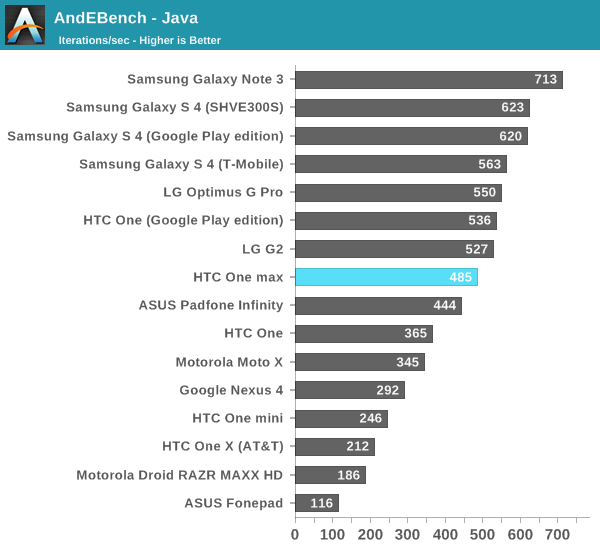
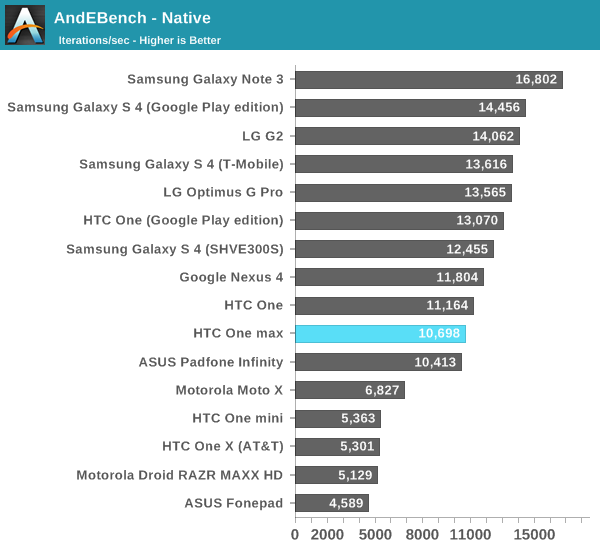
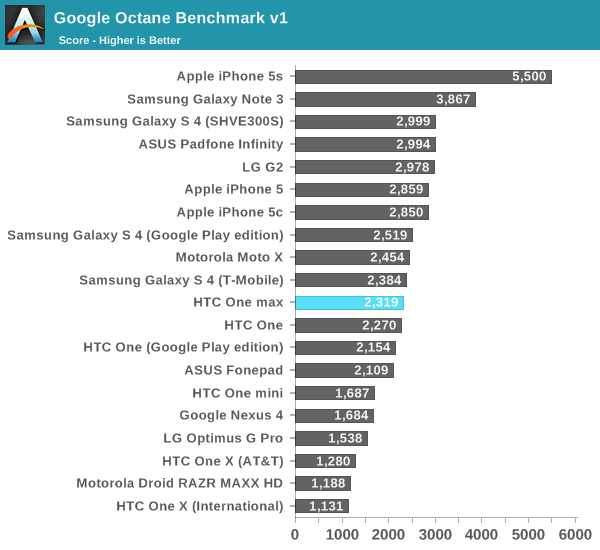
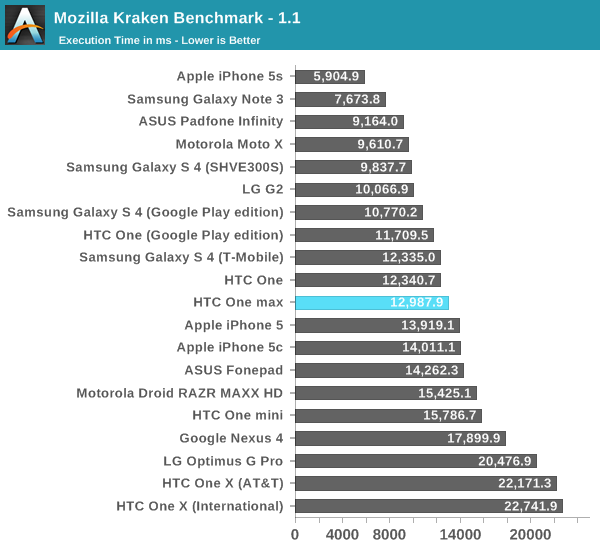
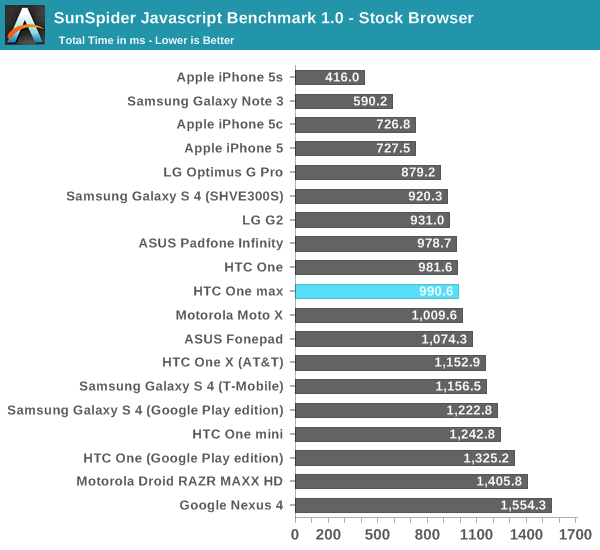
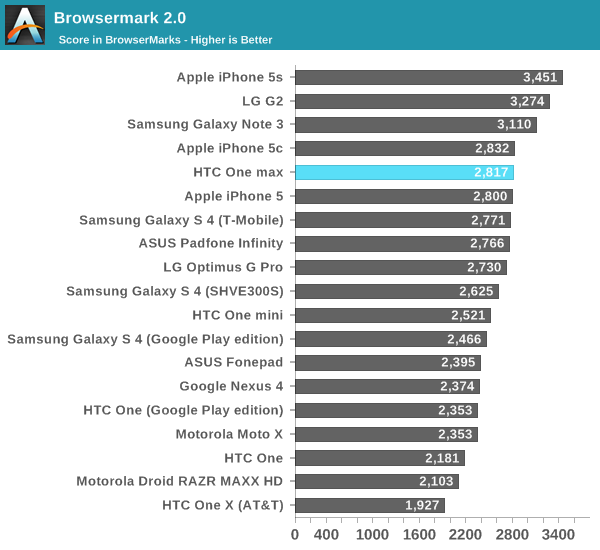
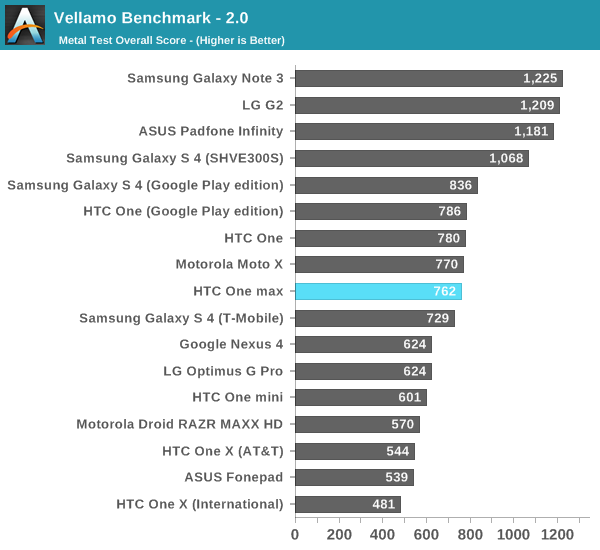
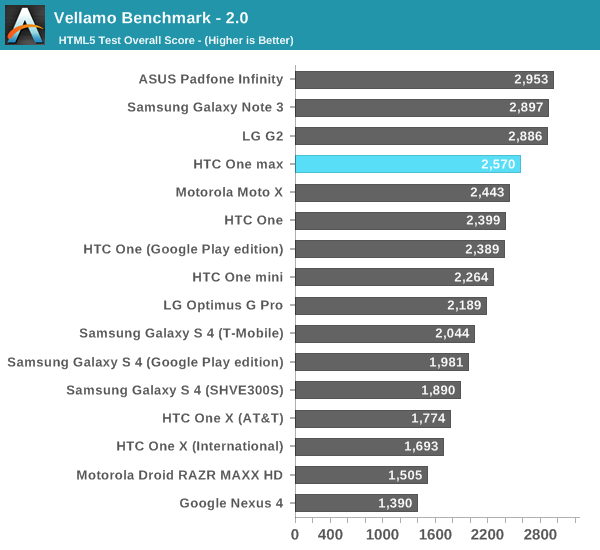
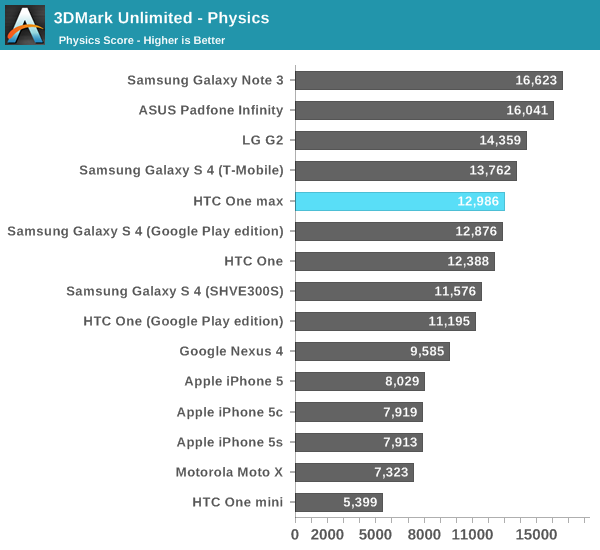
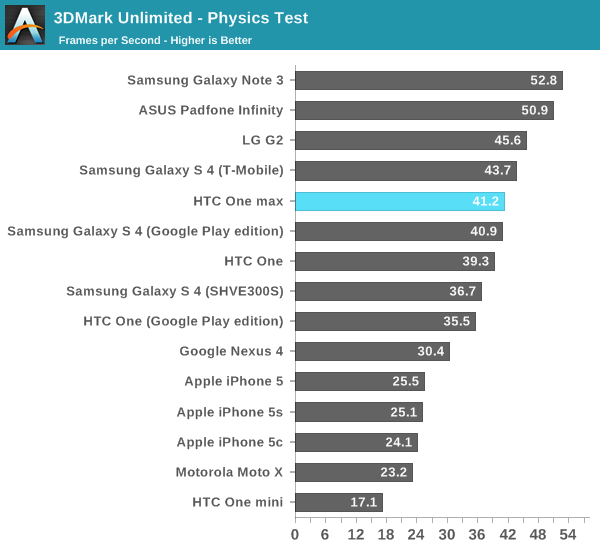
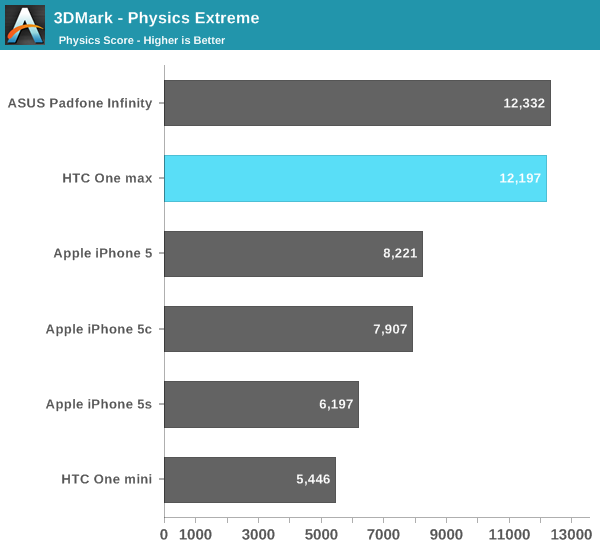
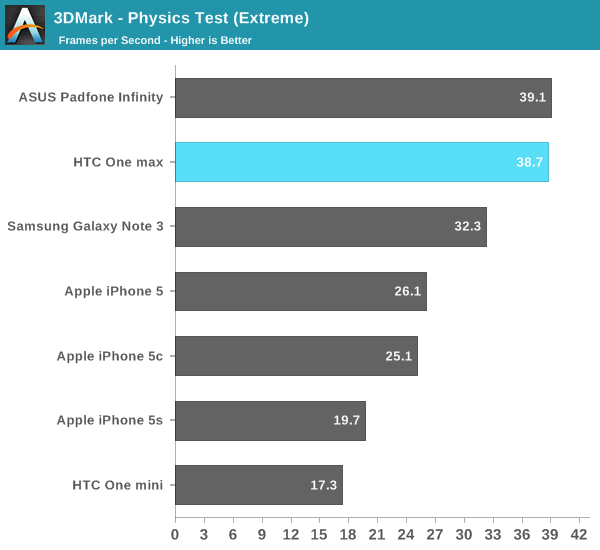
GPU
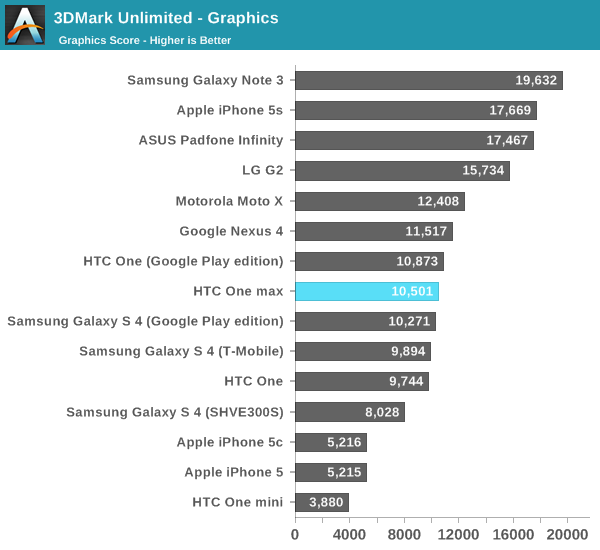
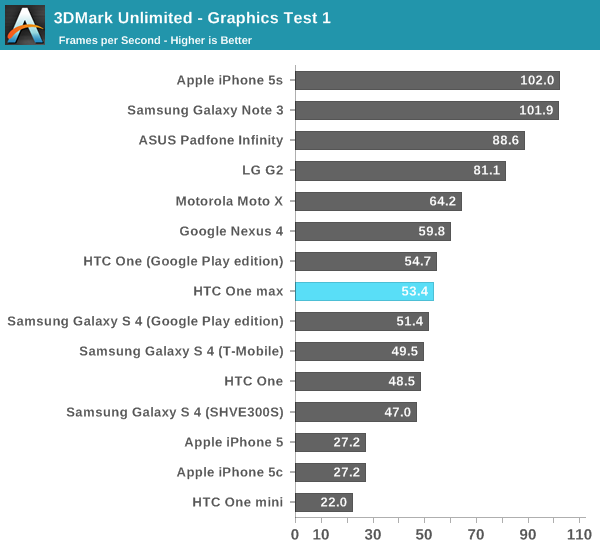
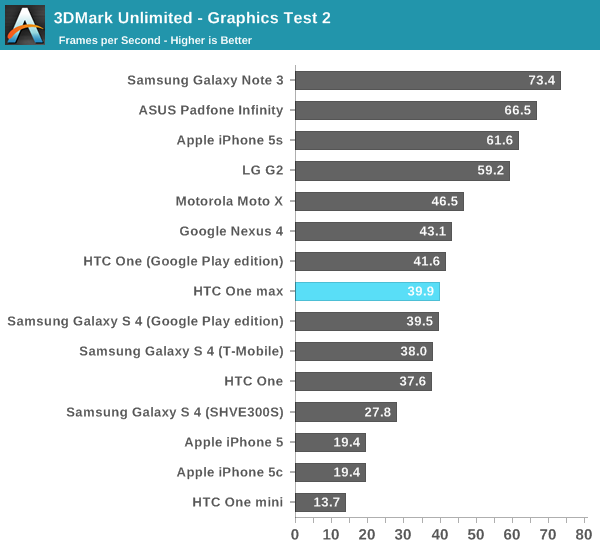
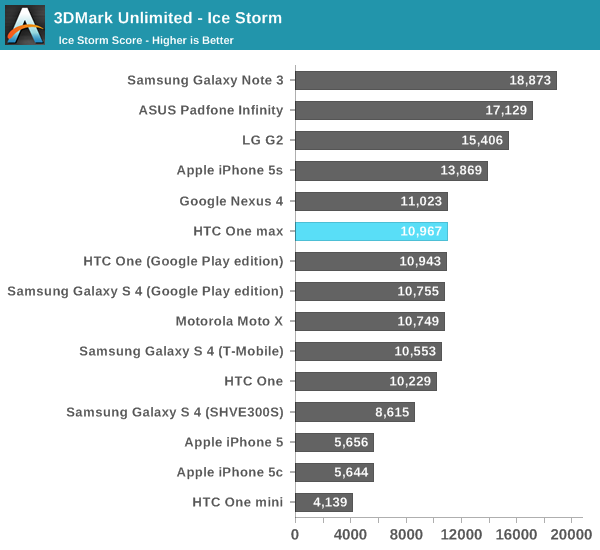
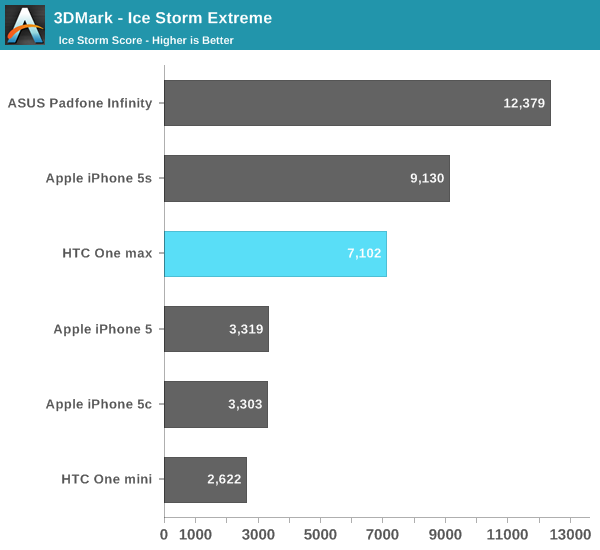
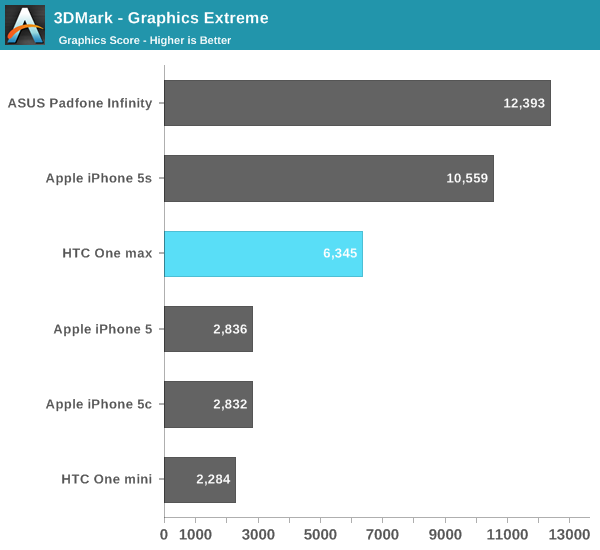
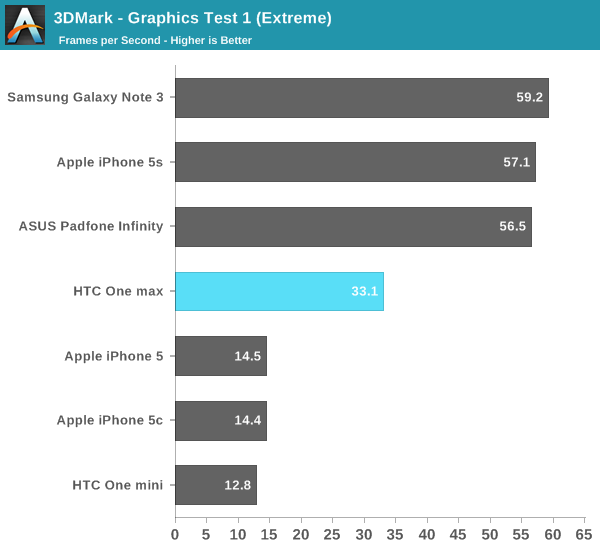
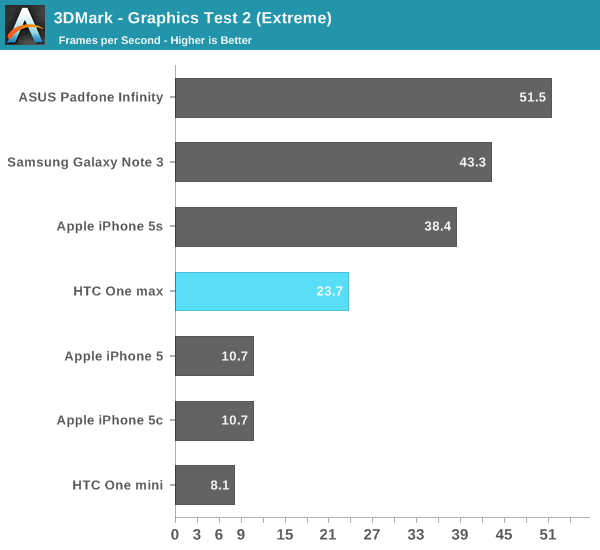
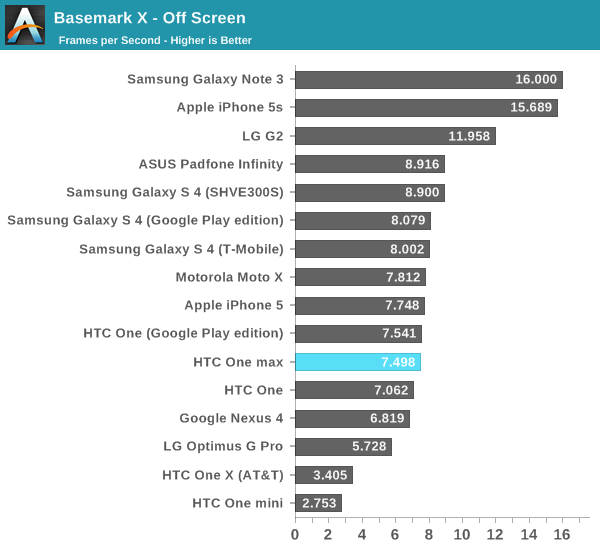
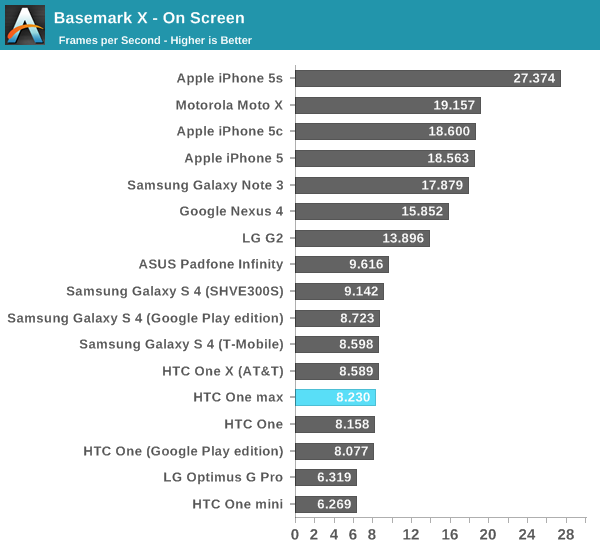
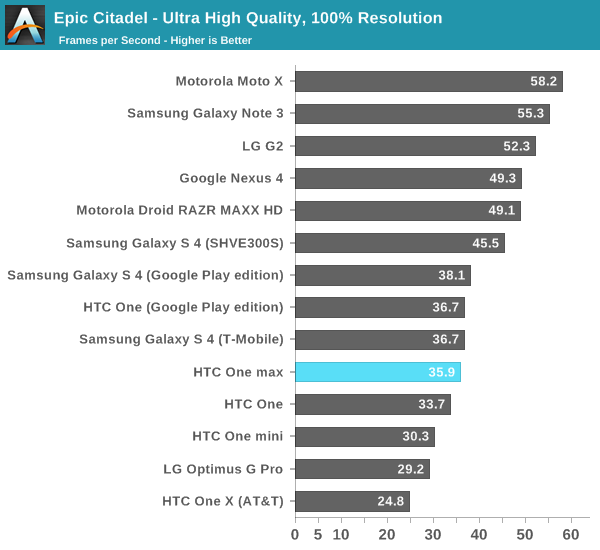
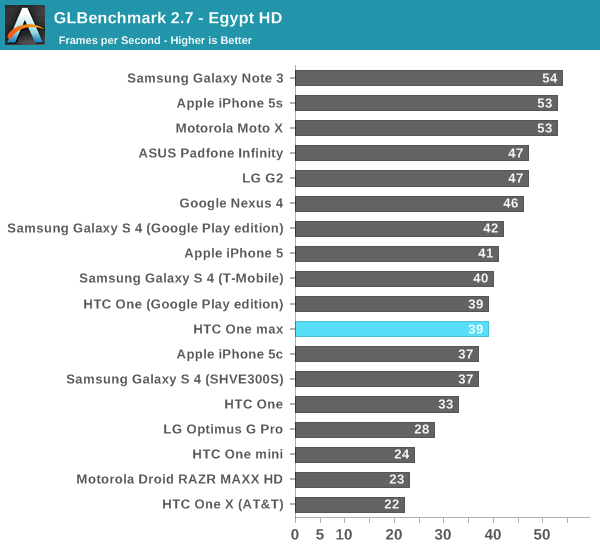
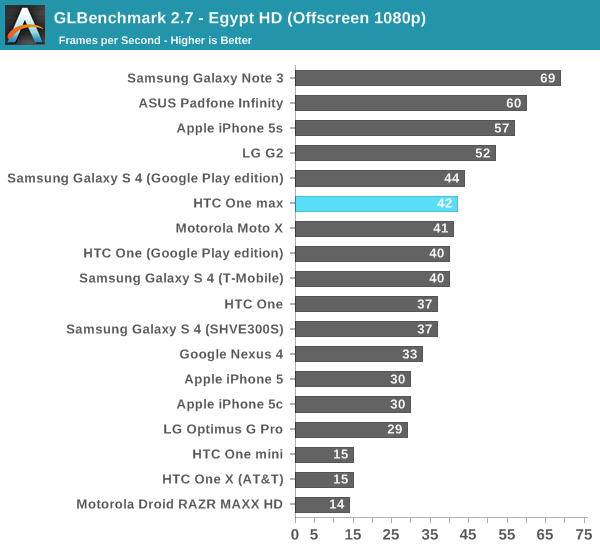
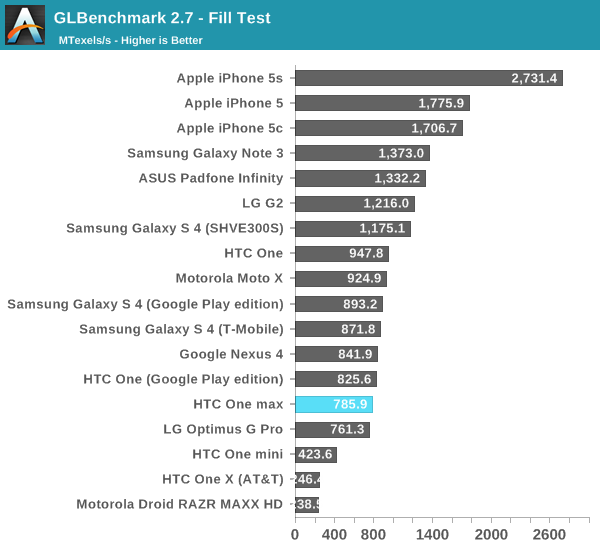

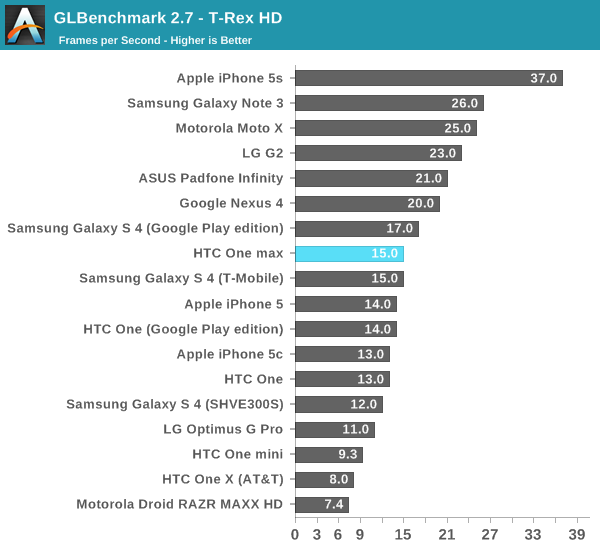
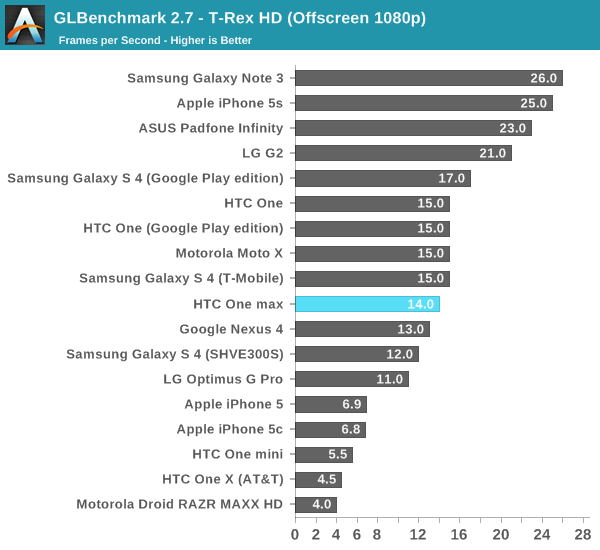
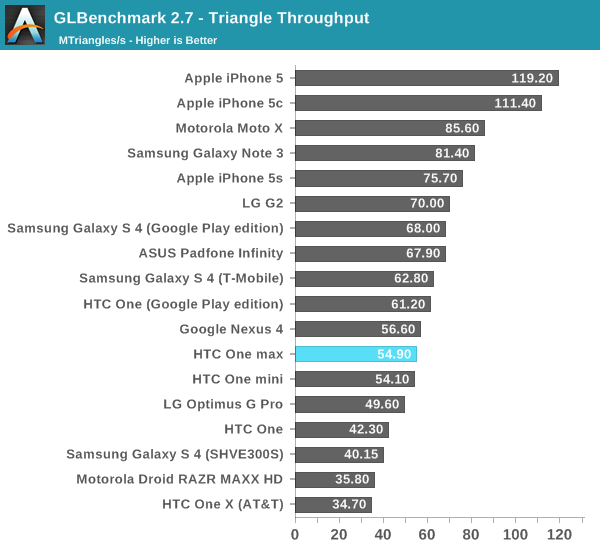
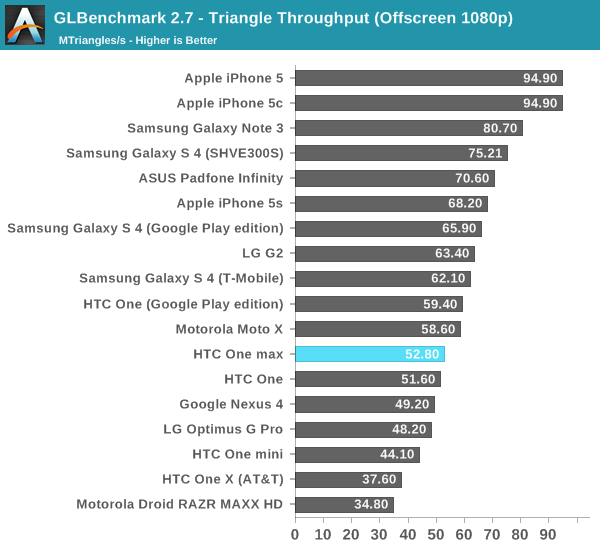
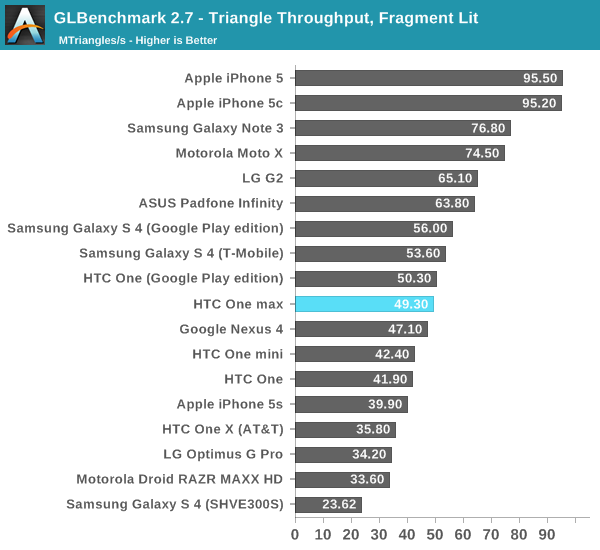
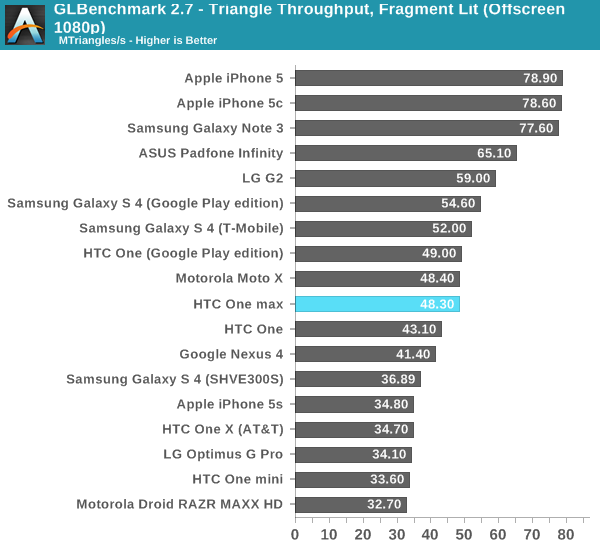
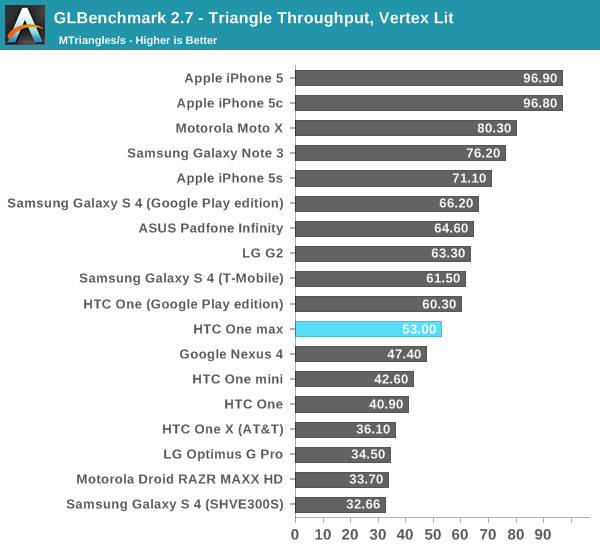
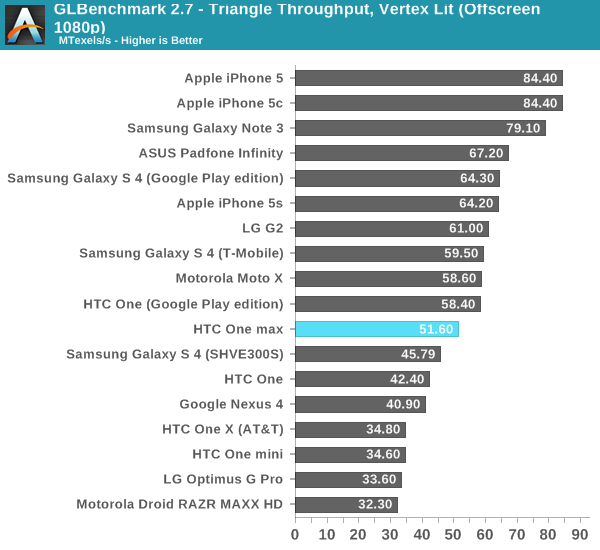
Storage
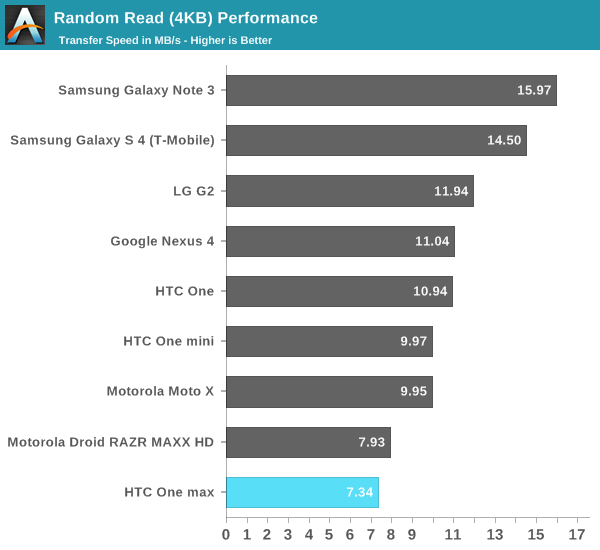
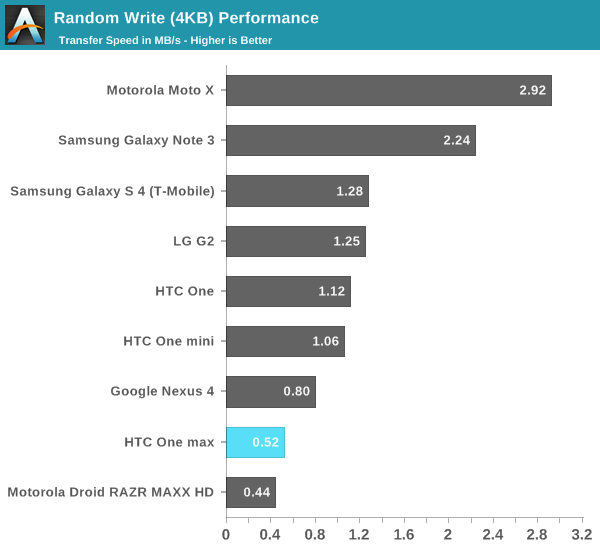
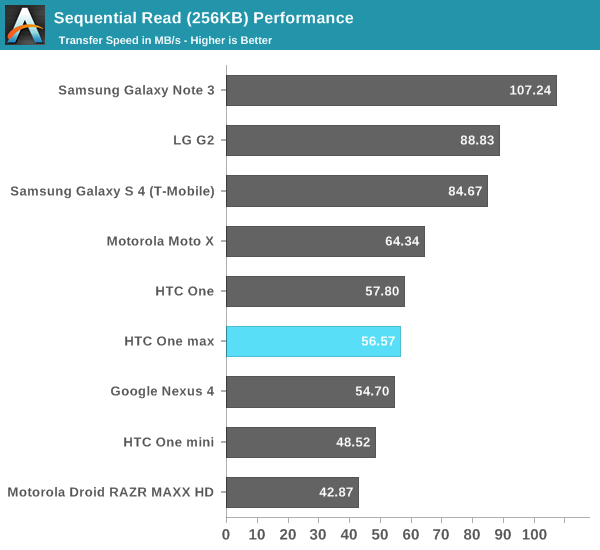
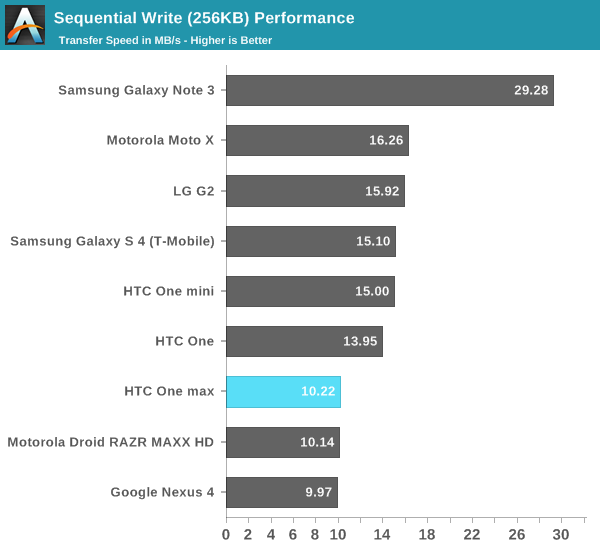
I’m not going to go through all the benchmark results on the One max since again it’s the 1.7 GHz Snapdragon 600 SoC we’re very familiar with at this point. The only oddity is storage performance, where the One max trails in random writes and reads, I'd attribute this to a different eMMC being used. The rest of the results are essentially within the margin of error. I initially suspected that the One max might have a bit more thermal headroom than the One, but this doesn't really seem to play itself out in the results, possibly due to the removable back door.


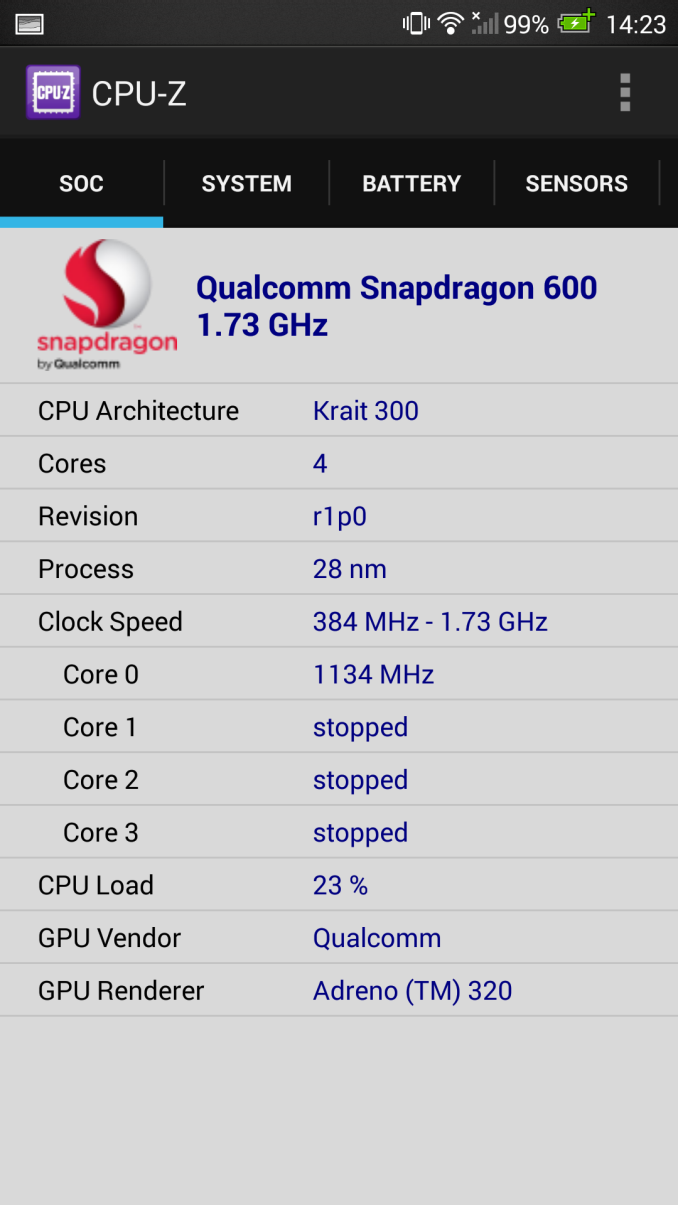
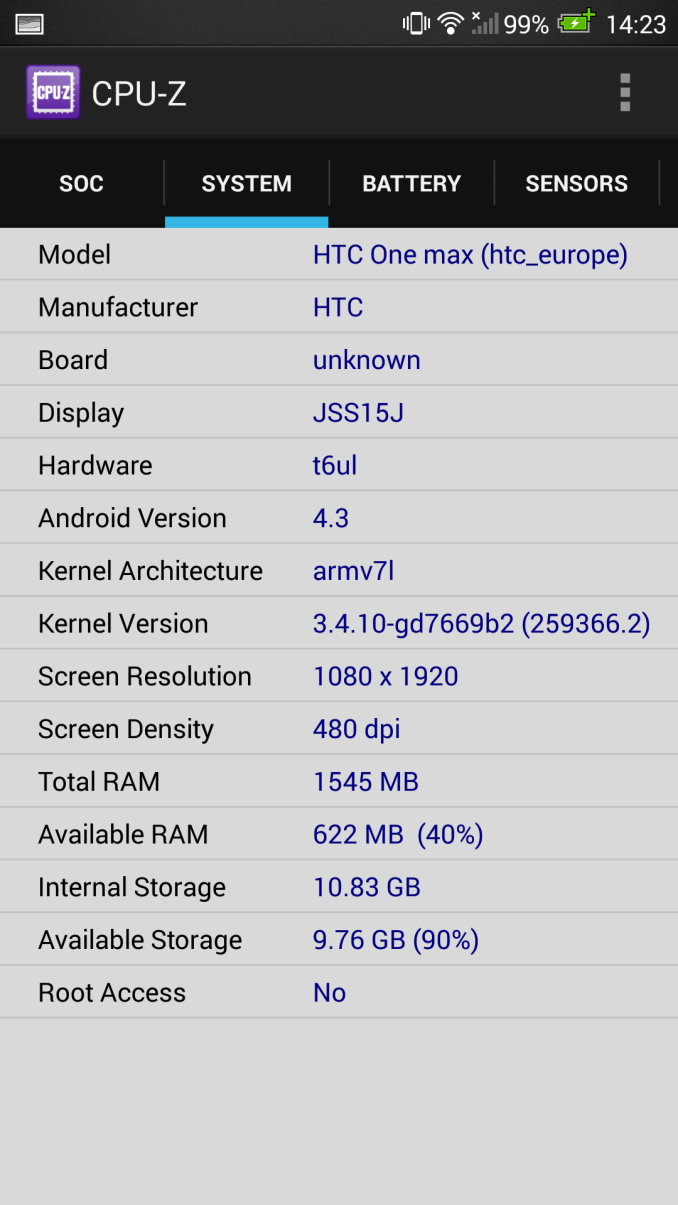








197 Comments
View All Comments
Braumin - Monday, October 28, 2013 - link
The SD cards I agree with, but removable batteries not so much. Manufacturers can include much larger custom batteries into a phone if it doesn't need to be a square battery that pops out the back. Plus, you can easily find microUSB battery extenders, which are FAR more convenient than swapping a battery because you don't need to reboot to do it.SD cards though - I don't think they need to go away until manufacturers (cough APPLE cough) stop gouging customers on increased storage.
Brian Klug - Monday, October 28, 2013 - link
SD cards, far and away, are going the way of the dodo. They're effectively already deprecated by the base Android platform (requiring OEMs to manually backport the ability to move APKs and OBB files over), and 3rd party SD support is pretty much in decline. The handful of applications that I'd expect to natively use the SD card either have it as a hidden feature, or have removed it entirely (I'm looking at you, Spotify).That pretty much leaves them only for use as dumb, manually managed storage. Like it or not, that's the reality.
The context (that you left out) is that I wouldn't trade build quality for an SD card, it makes almost no sense to have a huge removable door on the One max just for the sake of an SD card. The tradeoff is huge here.
Also the other reality regarding removable batteries is you do lose volume that way that could've been dedicated to more battery had it been sealed internally. That's fact.
The data I've seen from OEMs and operators shows that microSD cards get changed by a tiny demographic of users, or even used, if not installed - yes, OEMs had to start manually installing SD cards since users can't be bothered to install them. Continue to cling to 'em, but normal consumers don't care, and the rest of the world has pretty much moved on.
-Brian
apertotes - Monday, October 28, 2013 - link
heck yeah, I like to dumb manually manage my movies and music files without cluttering my apps space. Why is that so retarded? I have 80 gb in my S3, and I only have 10 free. Am I stupid for using a flagship device as a poweruser would? Should I pay $400 for a phone and use it only as an internet connected device? I think that reporters have way to much easy access to new devices and internet everywhere. Why would I stream movies or music if I can have them on my phone, and play them even on the subway or during a weekend on the mountain?There is zero reason not to want expandable space on a phone, other than being able to say "Yes, but this is unibody aluminium". And most reporters are doing half of Apple's job in convincing people that they really do not need a micro-sd card. "Why do you need it, when you can simply pay $10/month for Spotify, and then $40/month for an unlimited data contract to use Spotify?" Well, of course, you are swimming in money, you do not need a micro-sd card. But that is like convincing everybody to ditch their cars and simply call a cab whenever they need it.
Steven JW FCK - Monday, October 28, 2013 - link
Damn straight! You tell em! I mean how much money and infinite 4G signal has this guy got to try and rubbish the Micro SD card.Dentons - Monday, October 28, 2013 - link
It isn't difficult to see why reviewers awash in a torrent of new, free, phones aren't particularly enamored in these features.Reviewers don't use phones for 2+ years.
Reviewers don't have to pay for the larger memory models.
Reviewers don't keep any phone nearly long enough to wear out the built-in batteries.
On the whole, most phone reviewers interests aren't very well aligned with those of a cost-conscious consumer.
kiwidude - Monday, October 28, 2013 - link
Agreed, I'm still using my Galaxy S 8GB + 32GB, on my third battery and would have been forced into a new phone I have no need for if it wasn't for these features. Data here is very expensive so any cloud/streaming solution is impractical. I agree though in a world were the cost of the phone is not important, you update your phone faster than it takes for a battery to die and where you have unlimited data great.rabidkevin - Tuesday, October 29, 2013 - link
Couldn't agree more.. I just finally paid off my galaxy s2 after 2 years. The comments this reviewer makes are insane! He has no idea what he is talking about.superflex - Tuesday, October 29, 2013 - link
Finance a $100,000 house for 30 years. ReasonableFinance a $25,000 vehicle for 4 years. Reasonable
Finance a $600 phone for 2 years. Retarded.
Johnmcl7 - Monday, October 28, 2013 - link
Thankfully you're almost completely wrong on all counts there but it's a surprisingly ignorant post coming from someone who is generally knowledgeable when it comes to technology.Firstly, micro SD cards are not going the way of the dodo - they were in decline but there's been a noticeable turn around in devices supporting the technology. The microSD support in the HTC phone in this review is a turnaround from HTC's previous position and Nokia have brought microSD expansion to their 1520 which is also a change as previously their top end phones (1020, 925, 920 etc.) did not have sd expansion.
As for support in Android, the fact that it's not used in Nexus devices or part of the base system is completely irrelevant as Android builds are usually heavily customised in many areas. Samsung are one of the main Android handset manufacturers and they support microSD across their range, quite seemlessly as well plus Sony although not nearly as big are also sticking with micro SD support. The fact that the micro SD can only be used as 'dumb' data doesn't matter as that's what it is great for, many people criticise SD storage when it was incorrectly used in place of onboard storage (when it was a stupidly small amount). Micro SD expansion is ideal for larger amounts of video such as HD films and music, leaving the onboard memory for applications.
As for a supposed tradeoff, that's a completely nonsense excuse and a really poor one at that - it's easily possible to produce micro SD slots without compromising the build quality, Sony are currently able to produce weather sealed phones with micro SD slots.
And if nothing else, you should at the very least appreciate what SD expansion offers cost wise - the amount of money charged for onboard memory is completely ridiculous, it's far, far more than high speed micro SD cards cost.
I don't believe the data you've seen from OEM's as it doesn't make any sense at all - if such a small amount of people are using them, why do companies keep on putting them there? Why are companies adding micro SD slots to phones? I can't claim my experience to be in any way representative but looking at large deal sites when someone posts a good deal on a micro SD card, the deal usually gets very popular and most people are buying the cards for their mobile phones.
As for batteries being bigger if they're sealed in, that is absolutely not 'fact' and it certainly doesn't always apply in practice. The HTC One is a similar physical size to the Samsung Galaxy S4 (despite the larger difference the screen sizes suggest) yet the removable battery in the S4 is larger than that in the One. Either way, the differences are very small particularly compared with the full capacity of a battery which can be immediately achieved when swapping it out but not on a device with a sealed battery. Given current smartphones can quickly burn through batteries, it make a lot of sense to be able to switch over the battery and be back up to full almost immediately yet frustratingly few companies are now offering user accessible batteries as standard.
Furthermore, the battery is unlikely to last the full two years a phone should and certainly won't while keeping performance. On a device with a removable battery that's not an issue as it's a matter of seconds to swap over but for devices with a sealed in battery it's a much more time consuming and expensive repair.
John
Brian Klug - Monday, October 28, 2013 - link
I don't know how you can be objectively "wrong" about whether or not you think the tradeoffs are worth it, but whatever. I'll address the rest of your points:>As for support in Android, the fact that it's not used in Nexus devices or part of the base system is completely irrelevant as Android builds are usually heavily customised in many areas.
The base platform has deprecated SD card support, plain and simple. You saw the SGS4 launch initially with SD card support that essentially only worked for music and as a storage intent for the camera. Later they added the ability to move application data over by backporting it. Ironically enough today you see NVIDIA doing the same thing with Shield and their own BSP.
>it's easily possible to produce micro SD slots without compromising the build quality,
The context here is the One max, it isn't worth the tradeoff in build quality.
>I don't believe the data you've seen from OEM's as it doesn't make any sense at all - if such a small amount of people are using them, why do companies keep on putting them there? Why are companies adding micro SD slots to phones? I can't claim my experience to be in any way representative but looking at large deal sites when someone posts a good deal on a micro SD card, the deal usually gets very popular and most people are buying the cards for their mobile phones.
Take it or leave it I suppose, but that's the reality. Samsung continues to do it as a differentiation point, as do a few others. I would say however the trend against microSD by OEMs like Google and obviously HTC backs up this claim, rather than your other one.
The anecdote I heard that really made me think about this was that one of the major operators in the USA added a requirement that OEMs preinstall SD cards since users weren't even doing so with the pack-ins. Says something interesting about what demographic even knows about removable storage.
>As for batteries being bigger if they're sealed in, that is absolutely not 'fact' and it certainly doesn't always apply in practice.
Sorry, you are completely wrong here.
Removable batteries need to have a dedicated protection circuit for CE compliance and this adds to volume. In addition they need to be structurally sound, this translates to a plastic frame around the battery itself, and around the volume the battery occupies in the phone. That's the point almost everyone always misses when they start arguing about removable battery volumes versus internal battery volumes, and you can ask any OEM about it, its 100% fact that internally sealed affords bigger volumes in addition to geometries that wouldn't work with a removable battery. Also every OEM shoots for at least a two year longevity. Both LG (and Motorola) have talked a lot about how long they tested their 3.8V chemistry before accepting it.
-Brian